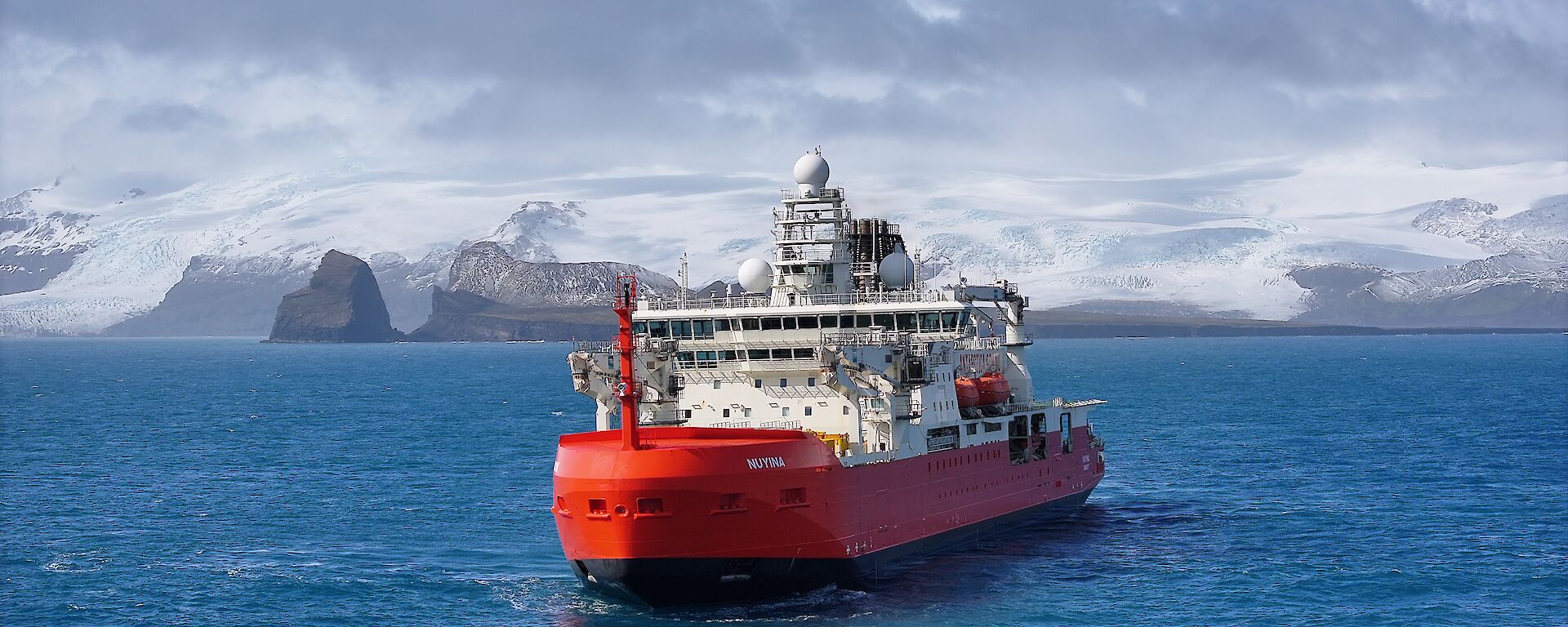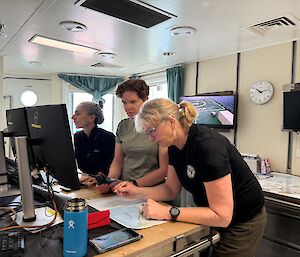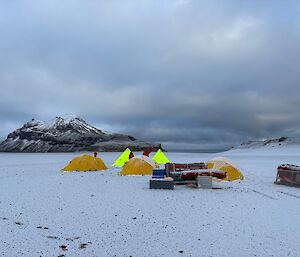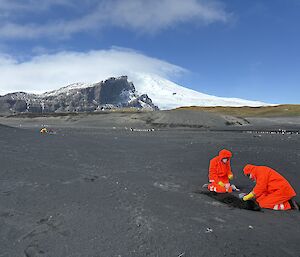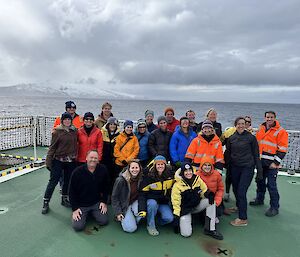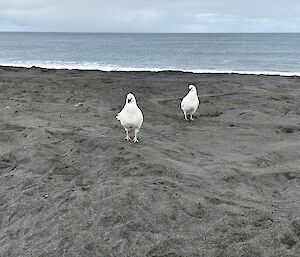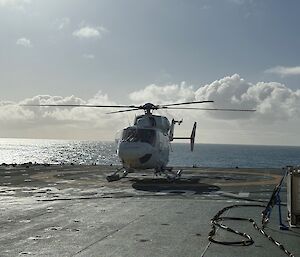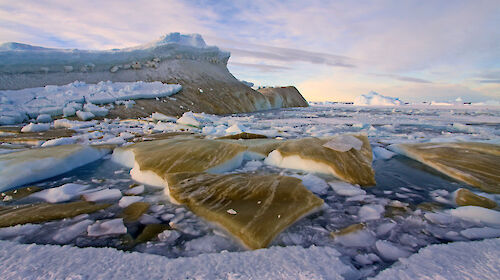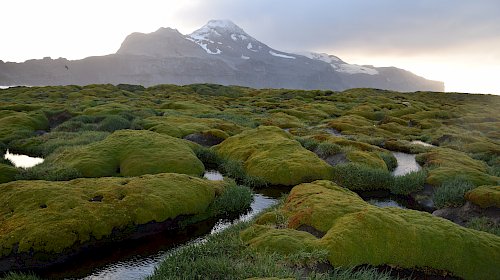The capacity of modern drone technology is incredible. Not only can they fly long distances, they’re stable in strong winds and can zoom in 400 times – enough to see birds sitting on their nests and seals pups messing around - from a height of about 100 metres.
They’re also less intrusive than helicopters, which have to fly above 1500 m here to avoid wildlife disturbance.
The M400 drone was operated by two people, braving the elements on what’s known as the monkey deck on level 11. Scientists were set up in a lab near deck 9, watching pictures transmitted to their screens from the drone in real time. They could then direct the drone pilots to move left or right, or zoom in on a particular frame, if they found something of particular interest. It meant they could assess kilometres of coastline before setting foot on the island.
Over the following days seabird and seal teams also travelled to several locations on Heard Island and camped to get a closer look.
Another team spent four days installing a sea level observing station at Magnet Point – the first permanent instrument capable of remotely monitoring tides, mean sea level and surge conditions on the island.
Eight top hat reflectors, which act as ground markers for satellites, were sling loaded off the ship by helicopter and placed in an array on the Nullabor – a windswept plain covered in volcanic grit at Atlas Cove. The top hats will be flown to their permanent locations around the island and affixed on Voyage 2.
A site assessment of the old station at Atlas Cove, conducted by the HIMI reserve management team, found the tank huts were faring surprisingly well in the harsh conditions.
Other groups got out in inflatable research boats, doing seafloor mapping and investigating marine life in the waters around Atlas Cove.
The wildlife and the weather have produced some surprises. We all expected atrocious weather conditions but most days have had at least a few hours of glorious sunshine and relatively calm seas.
The black-faced sheathbills have personalities all their own. They watch us, in our bright orange suits, and show keen interest in the work we're doing.
Unfortunately, towards the end of our visit, scientists observed unusual levels of mortality in elephant seals, consistent with H5 bird flu.
There were no observations of unusual levels of mortality in other species present on the island, including penguins and other seabirds.
The samples taken will be submitted to the CSIRO Australian Centre for Disease Preparedness for confirmatory testing when RSV Nuyina returns to Australia in mid-November.

